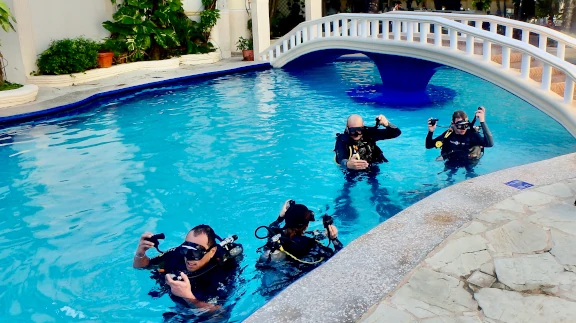When we think about the Dominican Republic, most of us imagine a tropical paradise above the surface—sunlit beaches, warm breezes, and turquoise waves. But what lies beneath those waves is just as extraordinary.
Beneath the calm, tourist-filled shoreline is a world that’s ancient, complex, and constantly changing. From flooded caves filled with prehistoric fossils to coral gardens bursting with color and life, the island’s underwater geography is one of the Caribbean’s best-kept secrets.
The Island’s Hidden Landscape
Tectonic activity, porous limestone, and thousands of years of geological evolution have made the Dominican Republic a hotspot for diverse diving environments. You’ll find:
- Reefs teeming with reef fish and soft corals
- Caves and caverns with haloclines and fossil beds
- Sunken wrecks, some accidental, others intentionally scuttled to create artificial reefs
These aren’t just beautiful locations—they’re environments rich with ecological and archaeological significance.
Cave Diving: A Journey Through Time
One of the most unique aspects of diving in Dominican Republic is the extensive cave systems hidden inland. Sites like El Chicho, La Jeringa, and La Taina lead you into otherworldly environments where fresh and saltwater meet in shimmering haloclines. Divers navigate past ancient stalactites, chambers once dry during the Ice Age, and fossilized remains of long-extinct species like Crocodylus rhombifer—the Cuban crocodile.
These are not just dives—they’re explorations of history frozen in time.
Shipwrecks: Metal and Memory
The country’s coastline hosts several intriguing wreck dives. Among them, the St. George wreck is one of the most iconic. Sunk deliberately in 1999, it has since become a thriving reef and a favorite for marine photographers. In contrast, the Atlantic Princess offers an easier, shallow wreck dive for those new to wreck exploration.
Every shipwreck here is both a habitat and a history lesson, telling stories of trade, tourism, and transformation beneath the sea.
Coral Reefs and Conservation
Coral reefs along the southeastern and northern coasts are home to parrotfish, trumpetfish, seahorses, and even octopuses. But these reefs are fragile. Divers in the Dominican Republic often witness firsthand the challenges of coral bleaching, warming oceans, and overfishing.
This makes the underwater experience more than visual—it’s educational. Conservation efforts led by local dive centers and marine biologists offer divers a chance to contribute to reef monitoring and restoration.
A Living Archive
Ultimately, diving in Dominican Republic is not just about scenery or sport. It’s about discovering a submerged world layered with ancient geology, modern marine life, and human history. Whether you’re floating through fossil-rich caves or gliding over a coral reef, each dive offers insight into the planet’s past and present.

